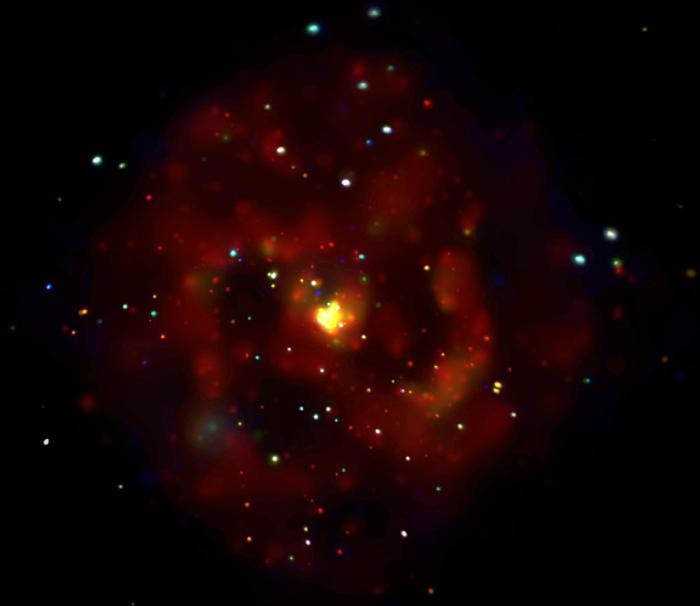
 Credit: NASA/CXC/U.Leicester/U.London/R.Soria & K.Wu
Credit: NASA/CXC/U.Leicester/U.London/R.Soria & K.Wu
The Compact Object Factory
Star formation takes place at different rates in different places. In some galaxies, star formation is extremely rapid, where dozens or hundreds of stars are produced each year. Such galaxies are called "starburst" galaxies. These galaxies produce large numbers of massive stars. Since massive stars produce complex atoms during their short, brilliant lives, starbursts are chemical factories. Starbursts are also factories of compact objects like neutron stars and black holes, which are produced by supernova explosions which mark the death of every star more massive than about eight times the mass of the sun. The nearest and one of the best studied of the class of starburst galaxies is M83, a spiral galaxy about 12 million light years from the Milky Way. A new window on the star formation and star death history in M83 has now been obtained by the Chandra X-ray observatory. The Chandra image of M83 is shown above in "true" color, in which the color in the image represents the energy of the detected X-ray photon (red for low energy, blue for high energy). This image shows an X-ray bright region at the center of the galaxy, suggesting large numbers of neutron stars which mark the last resting place of the dead stars in M83.
Last Week *
HEA Dictionary * Archive
* Search HEAPOW
* Education
Each week the HEASARC
brings you new, exciting and beautiful images from X-ray and Gamma ray
astronomy. Check back each week and be sure to check out the HEAPOW archive!
Page Author: Dr. Michael F. Corcoran
Last modified January 27, 2003


